FREE 2022 SOUVENIR EDITION
The Golden Age of Railroading isn’t just remembered, it’s back again!


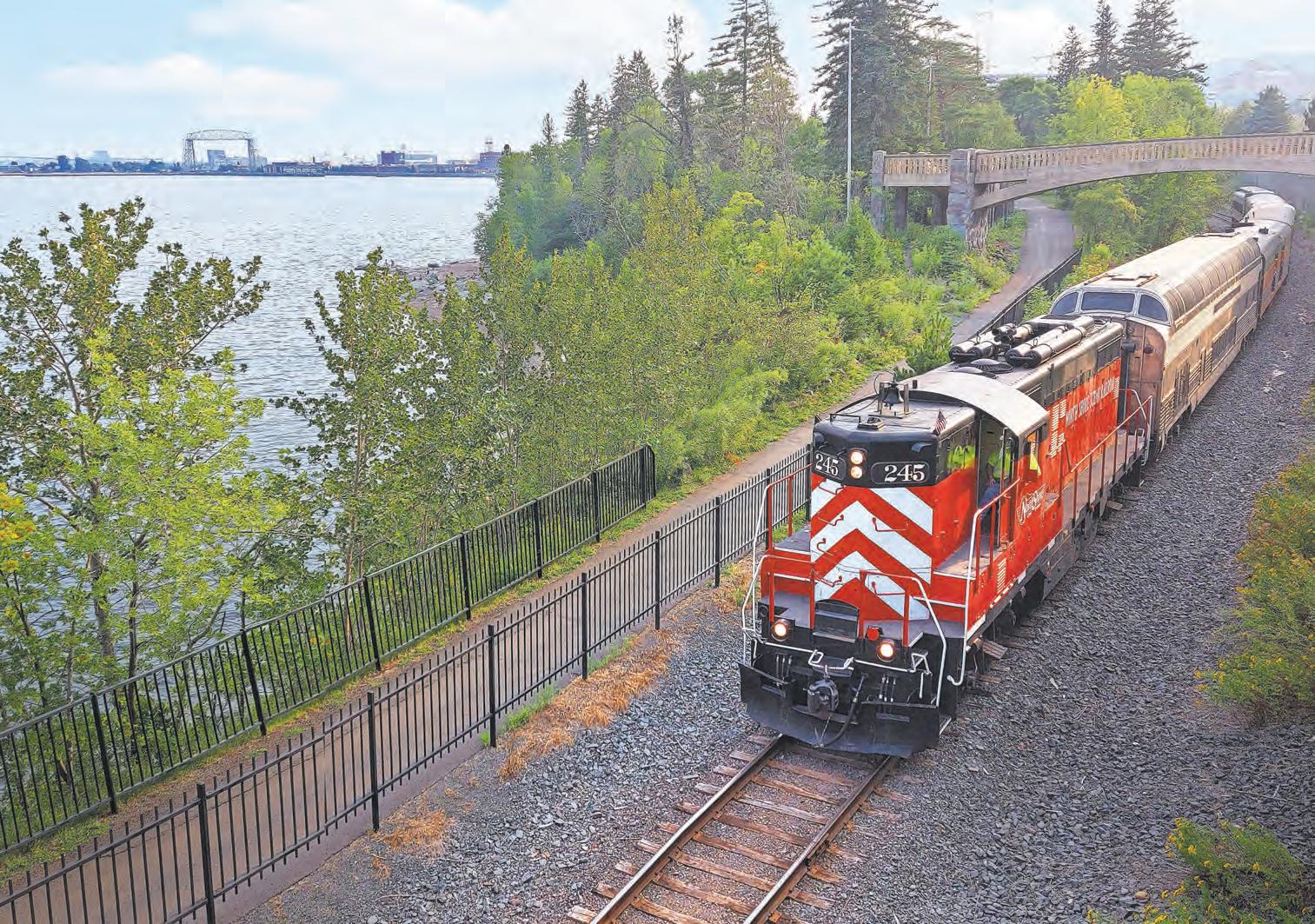

The Golden Age of Railroading isn’t just remembered, it’s back again!



Bottled water, bananas and downhill skiing, all have something in common.
We enjoy bananas from Costa Rica because of a failed railroad in 1876. Bottled water is nothing new. The Northern Pacific Railroad operated an ice factory and bottling plant on the shores of Detroit Lakes, Minnesota, starting in 1903. Bottled water from the clear, fresh bubbling Pokegama Spring there was served year round on NP dining cars.
How popular would alpine skiing be without a chairlift? Union Pacific Railroad invented the first one for their ski resort in Sun Valley. (See more about these innovations and other Lake Superior Railroad Museum Train Stories at www.duluthtrains.com/videotours)
If necessity is the mother of invention, railroads created the necessity. As the industry was being developed and growing across America, everything railroads did was entirely new and had to be created through imagination. It’s no different here on the North Shore Scenic Railroad that you are riding on today. We have constantly looked for new and exciting ways to enhance your guest/passenger’s experience.
New this year is First Class Under the Glass service on all our excursions. With the addition of
A cold blooded murderer pulls a North Shore Scenic Railroad train around a corner along the shore of Lake Superior in Leif Erickson Park. This GP9 from 1956 was one of the first generation of diesel engines that killed off the steam locomotives that had been the main motive power on the railroads since their inception. The #245 was originally a Northern Pacific engine. After several owners it ended up at the Lake Superior Railroad Museum and on the NSSR without modification, which is why it still has its high hood.
the BUDD-built full-length dome car SkyView, we now offer upgraded service every day on the Duluth Zephyr. Our other dome car, Silver Club, is on the Two Harbors consist. (See more on page 10.)
The mission of the North Shore Scenic Railroad is to provide SAFE, fun and educational train rides. We made a major investment by upgrading our professional GPS trigger narration. By telling the history of Duluth, Lake Superior, railroads and inclusive of all the people who envisioned and built the region, your train ride with us is informative and memorable.
EXAMPLE: On the train to Two Harbors you’ll learn what a flag stop on the railroad is and why the one at Larsmont was so unique. It wasn’t people the train was flagged down to pick up but fresh fish packed in barrels of ice.
Back at the Lake Superior Railroad Museum in the St. Louis County Depot we’ve brought on new customer service features and exciting and interactive exhibits.


Long a food desert around the Depot, the deliciously new Toasty’s Food Truck serves up a menu of favorites for lunch or snacks. Take your meal on the train. Enjoy it with an improved beverage selection of adult and soft drinks in our concession car. Grab a treat there for dessert.
Your admission to the Lake Superior Railroad Museum is discounted to half price with a train ticket.
FRONT COVER: Photo by Dave Schauer used with permission RIGHT: Your admission to the Lake Superior Railroad Museum is half price with a ticket on the North Shore Scenic Railroad. See the Trains….Ride the Trains!
continued from PAGE 2
Voted by USA Today as the “BEST Transportation Museum in America,” we have four new exhibits to show you.



Railroad Signal Lights explains what the reason for and the meaning behind trackside lights and signals. The exhibit is interactive and was funded by a SAFETY grant from the BNSF Foundation.
Big Mallet #227 vs. Little Mallet #225 is a new display that puts an exact, working model of these huge powerful steam locomotives right next to the real deal. There’s a kiosk explaining the incredible way these engines were built.
Ted Rose was a famous, Milwaukee-born rail enthusiast. His photographs and paintings are historic works of art. All summer a traveling exhibit from the Center for Railroad Photography and Art, featuring Rose’s works, will be on display in the
museum’s air conditioned Gallery Car.
Located outdoors, behind the museum train shed, is the new Locomotive Gallery with more engines, trains and interactive displays. It’s also a nice place to sit, relax and be surrounded by railroad history on the bricks under the old passenger canopies.
We didn’t invent bottled water, import bananas from the rainforest or put chairlifts on hills so downhill skiers didn’t have to walk back to the top for another run. Our job is to collect, preserve and present the stories about and artifacts used by the men and women who built the railroads that built our great nation.


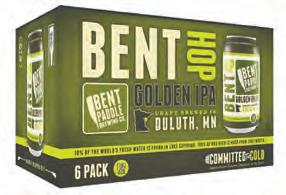
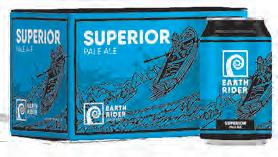
Thank You for coming to visit and riding our railroad!



The railroad story about bottled water joins segments on TV dinners, the necessity for time zones, drinking games and inventions by women and Blacks that started on the railroad and changed America. There are also detailed episodes on every single piece of equipment in the Lake Superior Railroad Museum. They can be found on our YouTube channel. All because we had nothing else to do.
COVID closed the



museum for a total of eight months. During that time videographer and Station Master Josh Miller and I recorded over 150 three- to seven-minute stories about artifacts in the museum and the interesting stories they evoke. Viewed over a million times and monetized by YouTube, we consider ourselves small time Train Influencers.
We don’t dance, show videos of cats, blow stuff up or tell you how to fix your Apple Ipad at home on the kitchen table using a screwdriver and a fork. These are fun, and sometimes
funny, informative train stories.
The response to the videos was overwhelming. Parents used them to motivate stay-at-home students by holding up viewing until their homework was done. We got comments and posts from around the world and that led to the highest number of members in the history of the Lake Superior Railroad Museum. New ones are still being dropped so tune in often.

We hope you like them and subscribe: www.duluthtrains.com/ videotours

When important people go to important places they roll out the red carpet. Think Oscars…Flash….movie stars…..Flash….paparazzi…. Flash….celebrities….Flash.
The Academy of Motion Picture Arts and Sciences has the most famous, signature red carpet. They adopted it on April 17, 1961, rolled out in front of the Santa Monica Civic Auditorium in California. Bob Texaco Hope was the Master of Ceremonies at the Oscars that year. “The Apartment” won Best Picture and it was the last black and white movie to win until
“Schindler’s List” in 1993.
The Academy got the new entryway idea from another famous red carpet that started in 1902. The place was New York City’s Grand Central Station. A huge labyrinth of tunnels, platforms and tracks made it difficult to stand out and for passengers find their way to the right train. That was a problem the New York Central Railroad wanted to solve for the kind of premium passengers they wanted to ride their new flagship train the 20th Century Limited.
The 20th Century Limited was an all first class, overnight express train between New
York and Chicago. It made few stops, scooped up water from pans between the rails to save time and catered to upper class celebrities and business travelers.
To make sure these express passengers had a way to find their train and know they were special, the New York Central was the first to roll out the red carpet. This special crimson walkway led right down the platform from the waiting area to the open vestibules in what became known as Red Carpet Treatment.

And once again, if you work it hard enough….it all comes back to the Railroad.









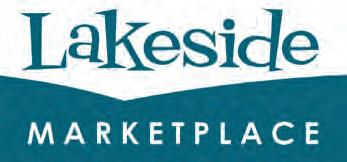



The most amazing things happen when young minds Dream Big. That’s the thought behind this year’s Thomas the Tank Engine’s visit to Duluth on his “Dream Big” tour. The most well-known steam locomotive in the world returns to the North Shore Scenic Railroad Aug. 5-7 and 12-15. Tickets are at www.duluthtrains.com.

Every summer Thomas leaves his home rails on the Island of Sodor and travels abroad under the watchful eye of Sir Topham Hatt, the railroad’s controller. Both of these popular characters will be at Duluth’s Day Out With Thomas on the North Shore Scenic Railroad.

bounce houses, bubbles, magic shows, continuous live music, games, treats, festival foods and the “All Things Thomas” gift shop. Plan to spend the best part of the day with activities inside and out. The Lake Superior Railroad Museum is included with your Day Out With Thomas ticket.



can be with Thomas. That is why the North Shore Scenic Railroad became the first Thomas venue to offer a sensory friendly Day Out With Thomas. This premier event began several years ago at the behest of families with children with autism. For individuals on the spectrum the noise, confusion and excitement of seeing their video friend in full size can be daunting.
THOMAS continued on PAGE 12



 By Todd Lindahl
By Todd Lindahl
Editor’s Note: For passengers on the Two Harbors Turn, as the train pulls into the downtown station look to your left to see how this railroad town welcomes guests. There on display is a giant Yellowstone steam locomotive and the more diminutive “Three Spot” (#3) and two other pieces of vintage railroad rolling stock. This is their story as told by Todd Lindahl noted Two Harbor’s railroad historian.
By 1934 the Great Depression had hit the former Duluth & Iron Range Railroad very hard and they were taking drastic measures to save as much of the business as possible. The Duluth Missabe & Northern had leased the D&IR in 1930 in the second year of the depression. The venerable “Three Spot” locomotive had been saved from the scrap yard by the Veteran Employee Association and put on permanent display next to the Two Harbors depot in 1923. 1934 was an important year since it marked the Half-Century of Progress in the
Transportation of Iron Ore celebration.
The city of Two Harbors began to plan events honoring this milestone in Minnesota’s iron mining history. They approached railroad president C.E. Carlson requesting they build a replica wood-






en 28-foot ore car and a four-wheel “bopper type” caboose to be added to the Three Spot display. The request was flatly turned down since the estimated $1,500 cost to build them new was seen as being too expensive. However, the railroad did agree to provide no more than


$500 and employees, on their own time, could use the company shops after hours to build the display pieces.

Car shop foreman L. A. Running pointed out that caboose #52 was about to be scrapped.

continued from PAGE 8
The 1893 caboose had been a four-wheeled bobber but had been stretched in 1909 to comply with the state’s double-track law. The car was shortened and all modern-at-thetime equipment like air brakes and automatic couplers were removed.

The ore car has an even more interesting history. It was one of 300 purchased in 1883 from a company in Stillwater, Minnesota. They were delivered to Two Harbors by barge from Duluth. Through some error in planning, they were the wrong length for the ore dock pockets that were on 24-foot centers. That meant tying up an engine and crew to reposition the train the entire time it was dumping. That mistake was never made again.

As new cars of proper
length replaced the old wooden ones, several were rebuilt as gravel spreaders. One of these spreaders designated as spreader
#2 had been sold for scrap in 1934. It was immediately repurchased by the company and reconfigured to the #251 on display.
It is the only surviving wooden ore car left from either the D&IR or DM&N. Amazingly the restoration of these two cars was accom-
plished for under the $500 limit.
The ore car and caboose have been on display now for 88 years. In another 12

years, in 2034, they may be celebrating 150 years of transporting iron ore as well as a 100-year-old restoration.



The golden age of railroading isn’t just remembered here… its back again!



The railroads have a long history of delivering a firstclass experience for their passengers. Throughout the generations, guests have been treated to fine dining, deluxe sleeping accommodations, and exquisite service. At the North Shore Scenic Railroad, I’m proud that we can offer at least a small taste of this legacy from the golden-age, first class experiences.

We are excited to be offering first class service options on almost all of our trains
this summer. This includes our Dome Car seating, lounge space, fine dining experiences, and some extra service options for those interested in paying just a little more for a unique experience.

Later in August, guests can ride “first class” on the



evening train, and have a fine dining four-course meal prepared by the best chefs Duluth has to offer, all while enjoying moving scenery out the window. The Elegant Dinner Train runs Fridays and Saturdays throughout late summer into fall, and gives guests a unique dining experience found nowhere else in the Twin Ports.
These are just a few of many options for excursions on our railroad that make it a truly unique attraction here in Duluth. We hope you will come back later this year or in the years to come and try one of our many excursion options.
Did you ever get the “old runaround?” Maybe you were “side-tracked.” It’s noon and “we stopped for beans.” He wanted to be an “ash cat” but all he could do was be a “baby lifter.”
It’s like railroaders have their own language. They do.
The “old runaround” is when the engine is moved from what was the front of the train, along the side of the train to the back of the train making the back of the train now the front of the train and what was the front of the train is now the back as the train heads back to the station. A lot of hustle but nothing gets accomplished — the “old runaround.”
“Going for beans” means parking the train and taking a lunch break at a trackside diner. The “ash cat” is a fireman on a steam locomotive and the brake operator on a passenger train is a “baby lifter.”
A “gandy dancer” is a railroad laborer. The long steel poles that trackmen used to shift rail were



famously made by the Gandy Tool Company of Chicago. When a team of workers moved rail with the metal poles they worked in unison as if dancing.

When a hobo hitched a ride in an open boxcar he feared the “cinder dick,” a railroad detective. The “brass hat” never had to worry about being thrown off the train. He was a railroad executive.
Today we know a “B&B” as a bed and breakfast lodging


establishment. But if your job was on the railroad, the “B&B” would mean you’re working in the Bridge and Building Department.
To “janney” means coupling two cars together. That’s because Eli H. Janney invented the knuckle coupling system in 1873. With little changes it is still used today.
Now you can talk like a railroader!


On your train ride today you’ll be passing through Leif Erickson Park along the shore of Lake Superior. This natural amphitheater descends to a mammoth stone stage with bookend turrets made of native rocks. The Works Projects Administration (WPA) built the castle-like structure during the Great Depression.
THOMAS

continued from PAGE 7
Sensory Friendly Day puts all that aside with quiet surroundings, orderly events, a smaller number of guests and conductors specially trained to minimize anxiety and maximize fun. The event caught on and has been replicated at other Thomas venues. This year Mattel, the Thomas brand manager, made
Originally called Cullum Park and then Lake Shore Park, it got its current name in 1927 when furniture store owners Birt Enger and Emil Olson bought the replica vessel Leif Erickson. The boat had sailed from Bergen Norway to Duluth to commemorate the travels and discoveries of the ancient Vikings in the New World. It was placed in the park and the park’s name changed.
Sensory Friendly Days a regular part of all Thomas visits based on the model that started here in Duluth.

Families with members on the spectrum get free tickets for that person and one adult/guardian courtesy of the Depot Foundation. This year’s Sensory Friendly Day is Thursday, Aug. 11, and is hosted by Autism Speaks Minnesota and Duluth Mayor Emily Larson.

With its Old World ties established, Leif Erickson park was about to become home to one of Duluth’s most colorful folkloric events. Duluth’s Folk Festival featured ethnic foods, music, dances and traditions. What started as a private backyard garden party grew to one of the largest folk festivals in the Midwest.
Colorful costumes swirled across


the stage as dancers young and old performed traditional routines celebrating the cultures of diverse world nationalities and Native American customs. The smell of shakshuka, chicken tikka masala, kabobs and flatbread filled the air. Families spread blankets on the ground and spent the entire day under the sun.
continued on PAGE 13
continued from PAGE 12

The Leif Erickson Folk Festival was an annual celebration. During construction of the freeway the park was closed and the event moved to Bayfront Park where it struggled, fizzled and ended. By the time the park reopened the magic was gone and so it was with the Duluth Folk Festival.


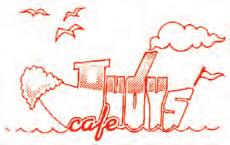
Northeastern Minnesota was a melting pot of immigrants and natives. We need to celebrate more of where we all came from to appreciate where we are today.




Huge advancements in technology have always created their own language. We talk on our cellphones about 4G and now 5G networks, as if most of us know what that means. Kodachrome gave way to the pixel. Xerox became a verb and all the bells and whistles once referred to a 1950’s automobile with every imaginable feature like power windows, seats and mirrors. Now a computer software package with every imaginable option has all the bells and whistles.
But what of the advancements made before cellphones, digital cameras,





computers and dashboard, automatically retractable, heated cup holders? What were the bells and whistles back then? They weren’t features. They were proclamations. Here’s what happened.
The end of the great race across America was nearly over. In a dry basin of sagebrush, surrounded on three sides by mountains, in a part of Utah little known before then, the two armies building the Transcontinental Railroad were finally going to meet. Promontory Point was the arbitrarily selected end zone




ADVANCEMENTS continued on PAGE 15

continued from PAGE 14
of a high stakes game that both the Union Pacific and Central Pacific were playing to lay as much track as possible before Congress cut off their funding.
The Central Pacific reached there on April 30. However, the Californians would have to wait another week before the Union Pacific crew came into view.
By May 7 only 2500 feet of ungraded land lay between the two railroads. That afternoon CP President, and by then the governor of California, Leland Stanford pulled in on his private train for the next day’s celebration. Shortly after his arrival a representative of the Union Pacific told Stanford that the joining of the rails would have to wait three days until the 10th of May.
The delay was blamed on a washout blocking the train carrying UP Vice President Thomas Durant. Turns out that was just half of the story. On May 6, on his way to Promontory, Durant’s train was mugged by an armed mob of several hundred disgruntled workers who were demanding their back pay. They switched his car onto a

sidetrack and chained it to the rails. Desperate telegraphs to nearby army bases for assistance were intercepted. The impasse was resolved when Durant finally surrendered and had the wages transferred from the railroad’s New York headquarters.
On the morning of the 10th the two engines recorded in that famous photo approached. A crowd of about 500-700 people, mostly workers, gathered in front of them. The actual pounding of the golden spike took only a few minutes before the dignitaries returned to their respective trains to continue the celebration in private. Meanwhile the rest of the country went crazy nuts.
The momentous finish was not only pounded down with gold and silver spikes but pounded out on brass. A telegrapher, by the name of Shilling, had all the lines cleared coast to coast when he used his brass key to tap out “Done” to a waiting nation.
In Chicago a “spontaneous” parade seven miles long jammed the streets. In Philadelphia flags were raised everywhere and the bells of Independence Hall chimed in with
church bells from across the city. One hundred guns fired salutes in New York’s City Hall Park. In San Francisco the celebration “came into an uproar and lasted well into the night.”
But nowhere was the completion of the Transcontinental Railroad more widely triumphed than where it started in the California hometown of the Big Four of the CP, Sacramento.
“At Sacramento the bells and whistles of thirty assembled locomotives led the general chorus of all the bells and whistles of the city in one prolonged demonstration of joy.” — San Francisco Examiner 5/12/1869
From that reporter’s summation of joy and jubilation came the phrase that for then and now means an all-out, no holds, show of enthusiasm for a brand new triumph and success…..all the bells and whistles!
You know, if you work it hard enough, it all comes back to the railroad.
Sources:
“The Iron Horse” – The Impact of the Railroads on 19th Century American Society – Marieke Van Ophem; 19942012 GMW
San Francisco Examiner – 5/12/1869
New York Herald – 5/11/1869
Fairlex Dictionary of Idioms – 2015 Edition


Trains run from the Depot
NOVEMBER 25 - DECEMBER 18

It’s the story of a young girl traveling by train to visit her grandparents in Duluth on Christmas Eve. The story is performed in the Railroad Museum at the Depot starting with live music and carolers against a backdrop of decorated trains and storefronts. Then take a train ride past the lights of Bentleyville and along the edge of Lake Superior with hot cocoa and cookies.
A special guest will visit and have a magical gift for every passenger!
Chosen one of the “BEST Christmas Train Rides in America” by MSN www.duluthtrains.com for tickets or call 800-423-1273

Sponsored by:








